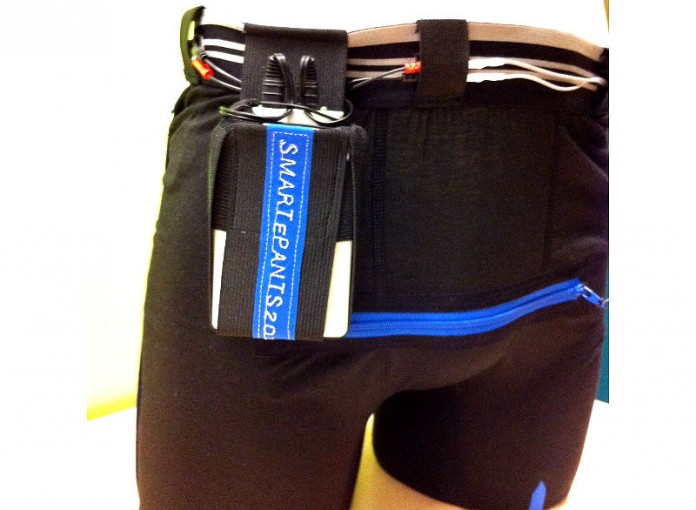#Pressure ulcers, or bedsores, are a serious health problem for many patients. For those with reduced mobility or sensation — such as patients who spend long periods of time in a bed or wheelchair — the risk of developing pressure ulcers is high. And once developed, not only are they painful and debilitating, but they can also lead to local infection, sepsis — and even death.
The prevalence of pressure ulcers in Canadian health care settings is estimated to be about 26 per cent, and individuals with spinal cord injuries are particularly affected. More than 85 per cent of individuals with spinal cord injuries will develop a pressure ulcer at least once during their lifetime. Other patients at risk include elderly residents in nursing homes, individuals in long-term care, and anyone with limited mobility in a bed or wheelchair.
MORE: GAME-CHANGERS: TOP 10 HEALTH TECHNOLOGIES FOR 2015
Pressure ulcers can be difficult to treat and take a long time to heal. Severe pressure ulcers can take months or years to treat and can require surgery. So, it’s better to prevent them before they happen. Prevention traditionally involves encouraging patients to move around or change their body position on a regular basis, or frequently repositioning them if they can’t move by themselves. Because this can be labour intensive for caregivers, devices to help prevent pressure ulcers have been developed, such as specialized beds and mattresses and, very recently, #Smart-e-Pants.
Smart-e-Pants are underpants — similar to bike shorts — that contain electrodes to deliver 10 seconds of electrical stimulation every 10 minutes to a patient’s buttock muscles. This stimulation is designed to prevent pressure ulcers by mimicking the subconscious fidgeting and shifts in body position of someone without mobility issues. The technology is still undergoing clinical trials and isn’t yet commercially available.
Prior to the development of Smart-e-Pants, electrical stimulation using electrodes placed directly on a patient’s skin ― which has been used as a treatment for pressure ulcers since the 1960s ― was investigated for preventing pressure ulcers. In a study of electrical stimulation for pressure ulcer prevention, which involved patients with spinal cord injuries, all participants experienced a reduction in the pressure that leads to pressure ulcers. Although, electrical stimulation appears to be effective, the time-consuming nature of placing and re-placing the electrodes led medical technology innovators to begin exploring the idea of placing the electrodes in an undergarment. Smart-e-Pants were born.
#CADTH — an independent, evidence-based health technology agency — is continually scanning the horizon for emerging drugs, medical devices, and procedures likely to have a significant impact on patient care and the health care system. In a recent horizon scanning bulletin — Smart-e-Pants: Using Intermittent Electrical Stimulation to Prevent Pressure Ulcers — CADTH reviewed the available evidence on the effectiveness of this new technology. As one would expect for a newer device, when searching the literature on Smart-e-Pants, CADTH found only short-term, small, and non-randomized trials — however, the early evidence is encouraging. According to comments by patients with spinal cord injuries in an early clinical trial of Smart-e-Pants, the underpants are easy to use. Some patients reported additional benefits, such as reduced pain, decreased spasticity, reduced fluid retention in the legs, and stronger muscle contractions.
A study of the safety and feasibility of Smart-e-Pants looked primarily at the demands on caregivers. The patients in this study were all at risk of developing deep tissue injuries — a severe type of pressure ulcer — and were in acute and tertiary rehabilitation hospitals, in long-term care facilities, or receiving home care. Most caregivers in the study gave the technology positive reviews, and both patients and caregivers were satisfied with the amount of time it took to put on and remove the underpants. In addition, patients said they experienced very little or no irritation, distraction, or discomfort from the electrical stimulation or from the underpants themselves. Although it wasn’t a main outcome of interest, none of the patients developed a pressure ulcer during the course of the study — which lasted four weeks or, in the case of hospital patients, until discharge.
While early research indicates that Smart-e-Pants relieve pressure and are safe and easy to use — particularly in individuals with limited mobility in beds or wheelchairs — the studies completed so far haven’t measured their effectiveness for preventing pressure ulcers. However, there is a research study currently underway that aims to measure the effectiveness of Smart-e-Pants, a technology that could prove to be an important advance in pressure ulcer prevention.
If you’d like to read CADTH’s horizon scanning bulletin on Smart-e-Pants – or access other bulletins on a variety of medical technologies not yet available or widely used in Canada – visit the CADTH website: www.cadth.ca/environmental-scanning.
To learn more about CADTH, visit www.cadth.ca, follow us on Twitter: @CADTH_ACMTS, or talk to our Liaison Officer in your region: www.cadth.ca/contact-us/liaison-officers.




